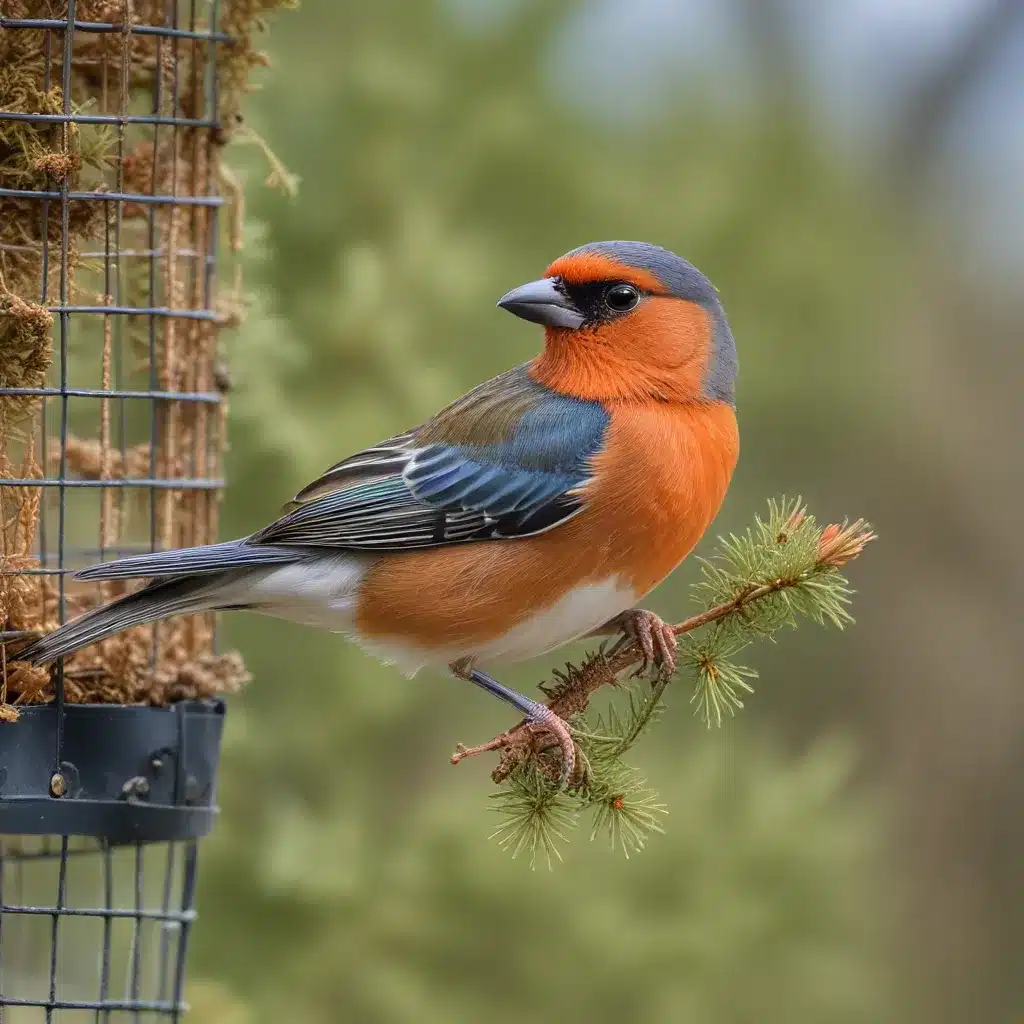
Avian Species
As an experienced avian caretaker, I’ve had the privilege of working with a wide variety of bird species – from the curious and playful cockatiels to the majestic and powerful macaws. Each species has its own unique set of behaviors, habitat preferences, and seasonal adaptations that must be carefully considered when it comes to preventing escapes.
Avian Escape Behavior
One of the most common reasons for bird escapes is the natural tendency for many species to explore their surroundings and seek out new experiences. Curious by nature, birds are often tempted to test the boundaries of their enclosures, especially during times of stress or environmental change. This is particularly true for young, adolescent birds who are just beginning to assert their independence.
Avian Habitat Preferences
Another key factor in avian escapes is the birds’ natural habitat preferences. Many species are adapted to specific environments, such as dense forests, open savannas, or coastal regions. When these birds are kept in captivity, they may become restless and attempt to escape if their enclosures do not adequately mimic their natural habitats.
Avian Seasonal Adaptations
Seasonal changes can also play a significant role in avian escapes. As daylight hours shift and temperatures fluctuate, birds may experience hormonal and behavioral changes that can trigger migratory or breeding instincts. These natural urges can drive birds to seek out new territories or mates, leading them to test the limits of their captive environments.
Aviary Design Considerations
Designing an aviary that meets the unique needs of each bird species is essential for preventing escapes. This requires a deep understanding of the birds’ natural behaviors and habitat preferences, as well as a keen eye for potential escape risks.
Enclosure Structures
The physical structure of the aviary is a crucial factor in escape prevention. Enclosures should be tall enough to accommodate the birds’ natural flying and perching behaviors, with ample vertical space to meet their needs. Horizontal space is also important, as birds may attempt to fly the length of the aviary in search of an exit.
Escape Prevention Measures
In addition to the aviary’s physical design, there are several measures that can be taken to deter avian escapes. These include strategically placed perches, nesting areas, and enrichment items that keep the birds engaged and less likely to focus on finding a way out. Proper wing clipping and the use of escape-proof doors and windows are also essential.
Monitoring Techniques
Regularly monitoring the birds’ behavior and closely observing any changes in their activity levels or demeanor can help identify potential escape risks. This may involve the use of security cameras, regular visual inspections, and close communication with the birds’ caretakers.
Seasonal Transition Challenges
As the seasons change, aviary managers must be particularly vigilant in their efforts to prevent avian escapes. The environmental and behavioral shifts that occur during these transitions can present unique challenges that require proactive planning and adaptable strategies.
Environmental Changes
Fluctuations in temperature, humidity, and daylight hours can have a significant impact on the birds’ physiology and behavior. These changes may trigger migratory instincts, alter feeding patterns, and even affect the birds’ overall sense of security within their enclosures.
Behavioral Shifts
Seasonal changes can also lead to shifts in the birds’ social dynamics, breeding behaviors, and overall activity levels. For example, during the spring breeding season, birds may become more territorial and aggressive, while the fall migration period can induce restlessness and a heightened desire to explore.
Preventive Strategies
To address these seasonal challenges, aviary managers must be proactive in their approach. This may involve adjusting the birds’ diets, providing additional enrichment opportunities, and carefully monitoring any changes in the birds’ behavior or physical condition. Maintaining a consistent routine and environment, as well as reinforcing escape-prevention measures, can also help mitigate the risks associated with seasonal transitions.
Avian Health and Welfare
Ensuring the health and well-being of the birds in our care is a fundamental responsibility of aviary management. By prioritizing the birds’ needs and promoting their overall well-being, we can not only prevent escapes but also foster a thriving, enriched environment that supports the birds’ natural behaviors and adaptations.
Stress Response
Stress can be a significant factor in avian escapes, as birds may become more prone to testing the boundaries of their enclosures when they feel anxious or threatened. By understanding the birds’ stress responses and implementing strategies to minimize environmental stressors, we can help reduce the risk of escapes and promote overall bird health.
Nutritional Needs
Proper nutrition is essential for maintaining the birds’ physical and mental well-being. Providing a balanced diet that meets the specific nutritional requirements of each species can help support their immune systems, feather health, and overall vitality, reducing the likelihood of escape attempts.
Enrichment Opportunities
Offering a variety of enrichment activities and stimuli can help keep the birds engaged, content, and less likely to focus on finding a way out of their enclosures. This may include the introduction of new toys, foraging opportunities, and even training exercises that challenge the birds’ problem-solving skills.
By combining our deep understanding of avian behavior, habitat preferences, and seasonal adaptations with proactive aviary design, monitoring techniques, and a commitment to the birds’ health and welfare, we can effectively prevent avian escapes and ensure the safety and well-being of our feathered friends. At Mika Birds Farm, we are dedicated to providing our birds with the best possible care, and we are always here to share our expertise and support you in your own avian adventures.


